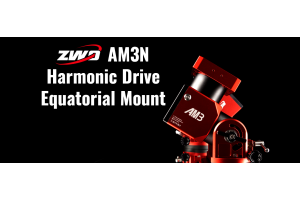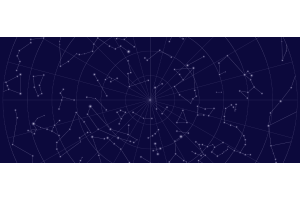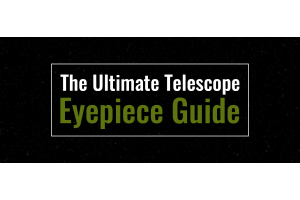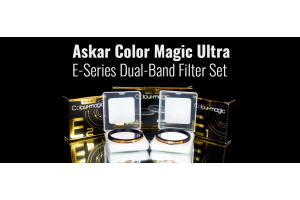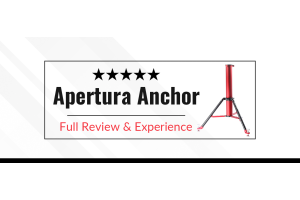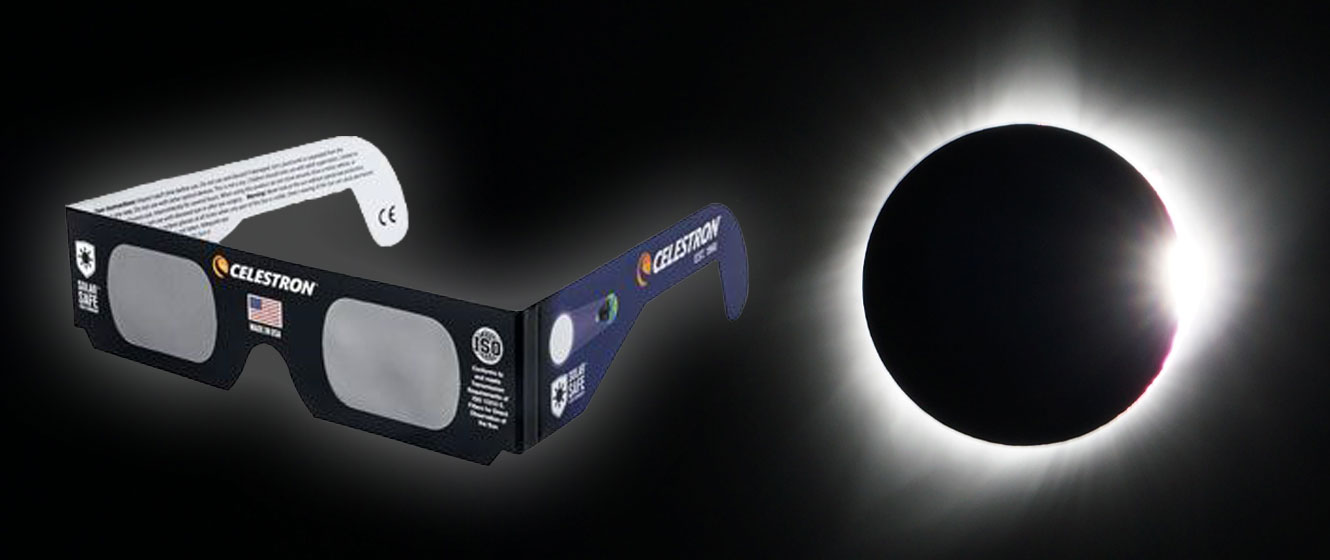
A total solar eclipse is one of nature’s must-see sights. There’s simply nothing else like it; for a few brief minutes, as the Sun, Moon, and Earth align, darkness falls, the temperature drops, the stars shine, and the ghostly glow of the Sun’s corona forms a halo about its blackened disc.
While this is certainly the highlight of the eclipse, it’s not the only thing that’s worth seeing. Totality may only last a few minutes, but the entire eclipse, from start to finish, can last several hours. This gives you the opportunity to see the Sun as you’ve probably never seen it before - as a crescent! However, it’s crucial to protect your eyes while you’re enjoying the different stages of the solar eclipse. That’s where solar-safe eclipse glasses come in.
The Two Stages of a Total Solar Eclipse
During a solar eclipse, the Moon appears to pass in front of the Sun. This happens at the New Moon, when the Moon is between the Earth and the Sun, and the three are aligned. (The reason eclipses don’t occur at every New Moon is because the orbits of the Moon and Earth are slightly inclined, so the Sun, Moon, and Earth aren’t always in precise alignment.)
There are two stages involved in a total solar eclipse: the partial stage and totality itself. The partial stage begins when the edge of the Moon first touches the edge of the Sun. Over the next 75 minutes or so, the Moon will gradually move across the face of the Sun until the Sun’s entire disc is obscured.
At that point, the totality stage of the eclipse begins. The length of this stage will vary, depending on your circumstances. More specifically, it will depend upon the distance of the Moon and how far from the center of the path of totality you are. For example, if you’re on the edge of the path, totality may only last a few seconds. However, for anyone at the center of the path, totality will typically last about three to four minutes.
If you’re outside the path of totality, you’ll only see a partial eclipse. In that case, the eclipse will last anywhere between a few minutes and about two and a half hours, depending on how close you are to the path of totality and how much of the Sun’s disc will be obscured.
The eclipse of April 8th, 2024, is particularly noteworthy as almost everyone living in North America and Central America (excluding Alaska and the far northwestern edge of Canada) will witness at least a partial eclipse, giving hundreds of millions the chance to witness this celestial event for themselves.
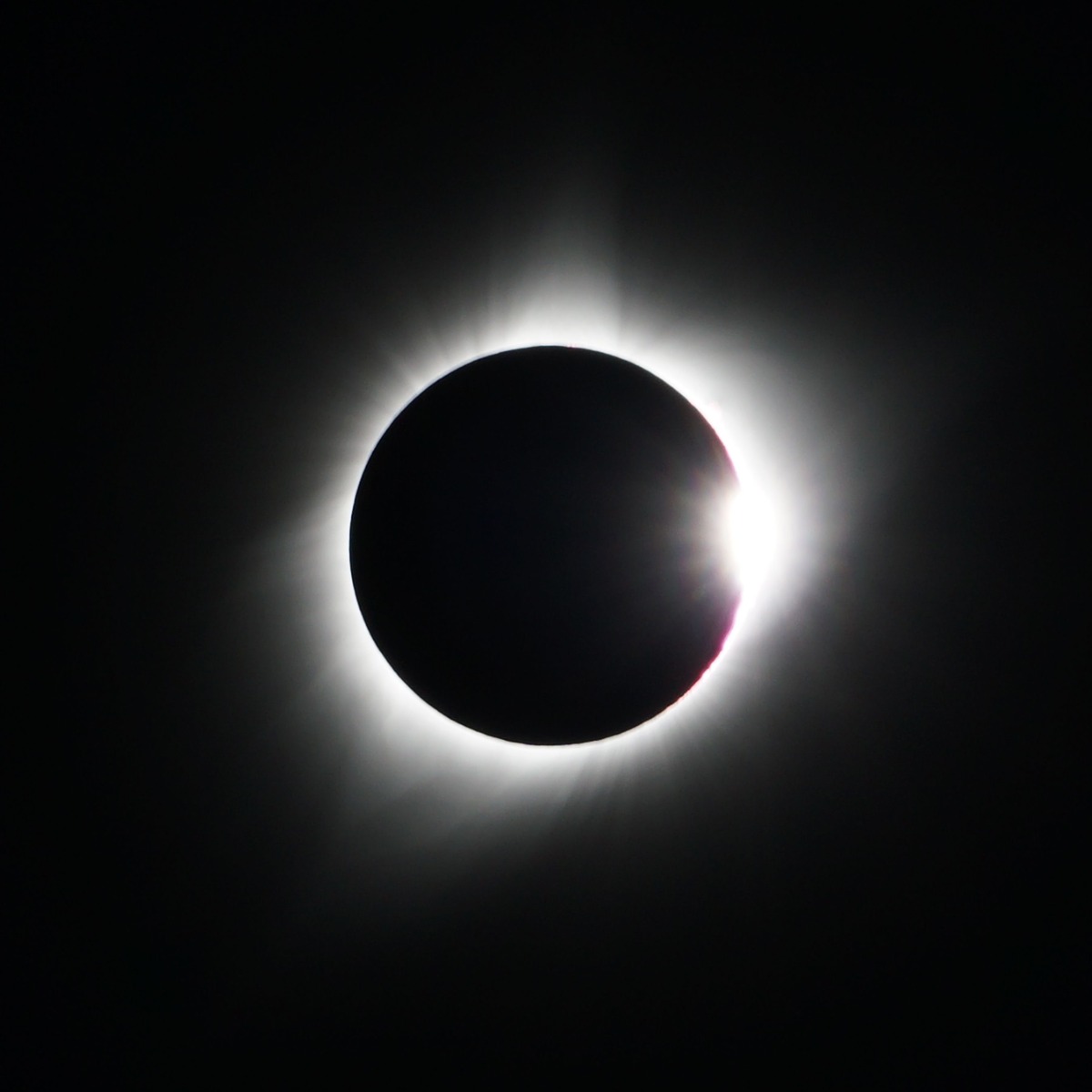
That said, it’s worth noting that it’s safe to look at the Sun with the naked eye during totality, but you should avoid looking directly at the sun during the partial stage and never use regular binoculars or a telescope - even during totality. You might think totality is safe - after all, the Sun is completely dark - but you may not know how much time you have left until totality comes to an end, and when it does, your eyes could be severely, irreparably damaged.
Why You Need Solar Eclipse Glasses During a Partial Eclipse
In short, you should always exercise extreme caution while looking at the Sun - even during the partial stage of the eclipse. Consider the full Moon. If you’ve ever looked at the full Moon on a clear night, you’ll know that it can be dazzling. Even looking for a few seconds can leave you with an after-image and make it difficult to see your surroundings.
The Sun is roughly 400,000 times brighter than the full Moon, and when you factor in the heat and the UV rays, it quickly becomes apparent that staring at the Sun can be a very dangerous pastime indeed! Now imagine what would happen if you magnify the Sun’s effects using binoculars or a telescope.
With this in mind, if you have any plans to look at the Sun during the partial stage of the eclipse, you should always use a pair of solar eclipse glasses. The lenses of the glasses are made from a film that blocks out the vast majority of sunlight, making it safe for you to look directly at the Sun; however, it’s still worth taking a moment to follow some basic safety steps.
Firstly, always check the lenses before use to ensure they’re intact and not damaged in any way. This includes looking for tears and scratches that might compromise the integrity of the film and any separation between the frame and the lens itself.
Secondly, only use glasses produced by a reputable manufacturer. A quick online search may give you hundreds of options, but you’ll need glasses of optimal quality.
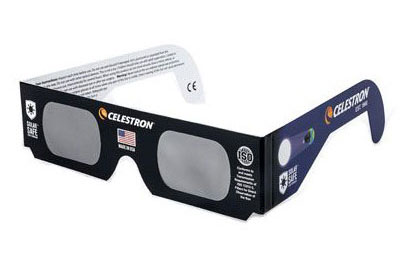
For example, Celestron is the world’s largest manufacturer of astronomical equipment. Their EclipSmart glasses are inexpensive, but more importantly, they’re safe to use. Besides blocking 99.999% of the Sun’s light, they’ll also prevent infrared and ultraviolet light from damaging your eyes.
More than this, Celestron’s glasses are ISO 12312-2 certified, which means they meet the internationally agreed standards for filters for direct observation of the Sun and have been independently tested by SAI Global Assurance Services.
What Will You See When the Sun is Partially Eclipsed?

So now that you have your glasses, what can you expect to see during the partial stage of the eclipse? At the moment when the Moon’s edge first touches the Sun, you won’t notice any difference at all, but the Sun is still worth a quick look.
It’ll appear the same size as the full Moon, and you may notice tiny, black dots on its surface. These are sunspots; they appear dark because they’re cooler areas of the Sun’s surface and, therefore, produce less light in comparison to the surrounding area. They might not look like it, but many of these spots are larger than the Earth itself!
Come back 15 minutes later and you’ll see a curved chunk missing from the Sun, and it now looks like a cookie with a bite taken out of it. About 30 minutes later still, half the Sun will be obscured, and it will show a wide, distinctly crescent shape. If you saw sunspots before, are they still visible now? Or are they covered by the Moon?
With 15 minutes left before totality begins, you’ll see the Sun now looks like a slender crescent Moon. At this point, you’ll have also noticed that your surroundings have darkened; even without the eclipse glasses, it’ll seem as though you’re wearing sunglasses!
Check back on the Sun at regular intervals until totality occurs. Then, once totality is over, you’ll see the process in reverse. The thin, crescent Sun will gradually grow thicker as the Moon recedes until the entire disc of the Sun is visible once again.
One last thing: although you can theoretically use your eclipse glasses to look at the Sun on a regular day, it’s not advisable to do so. Eclipse glasses are designed for eclipses, not regular solar viewing, and if you want to start studying the Sun in detail, it’s best to invest in some dedicated solar equipment.

Learn More
Interested in learning more about solar and lunar eclipses? Not sure where to begin? Check out our Astronomy Hub!






